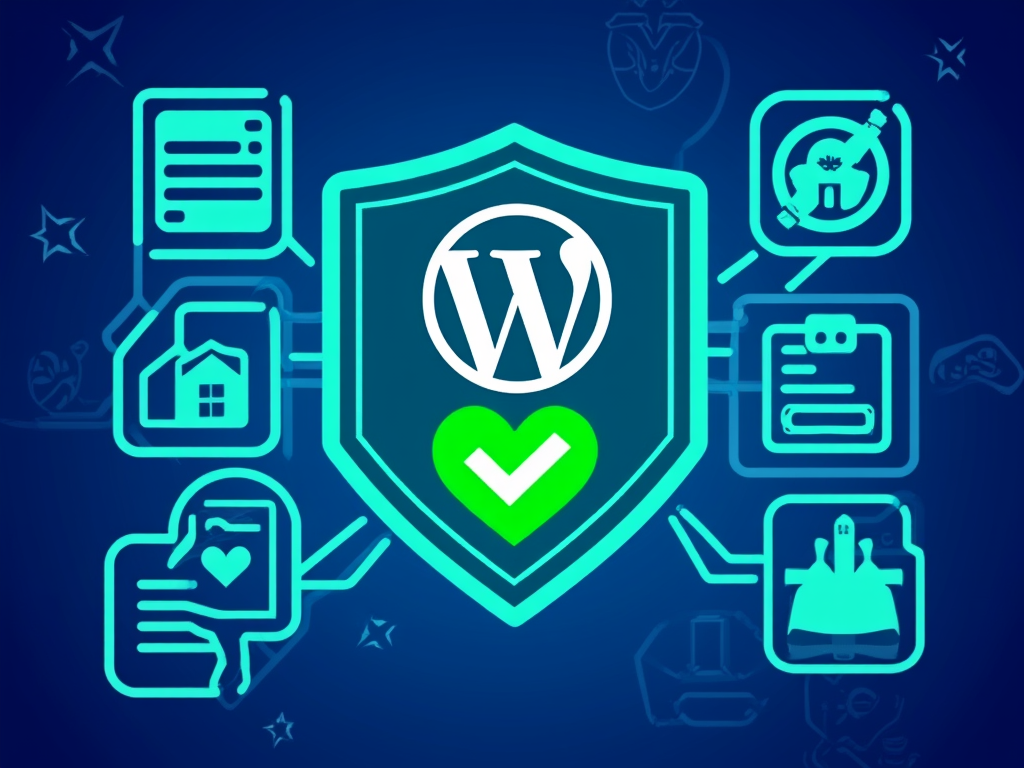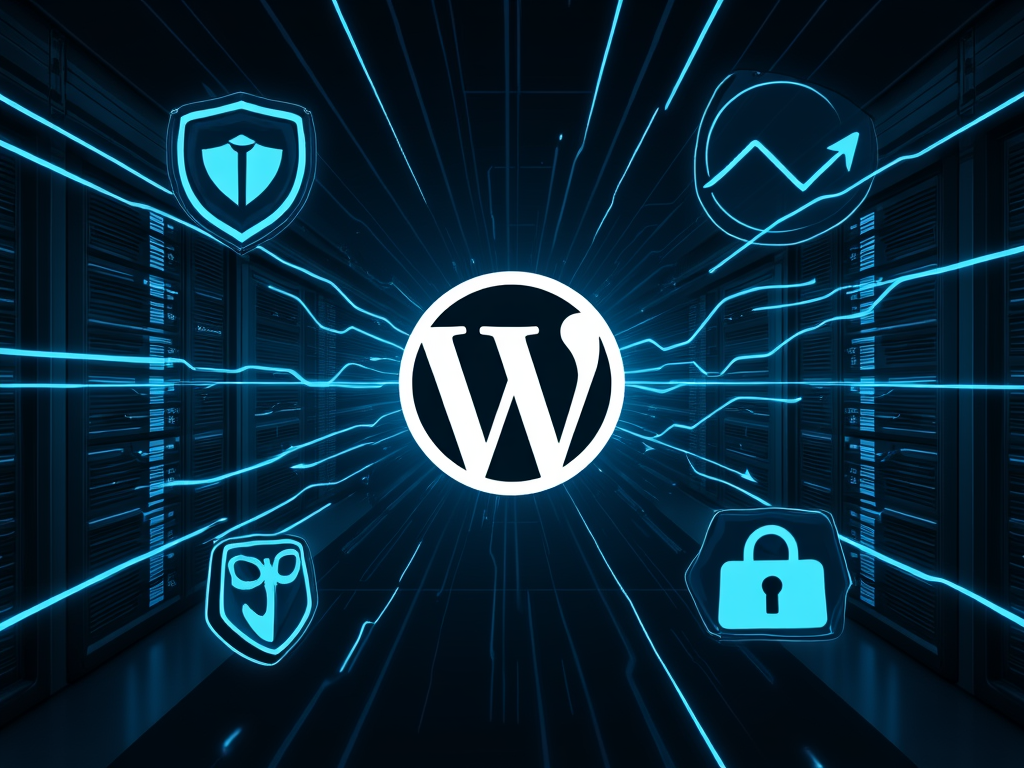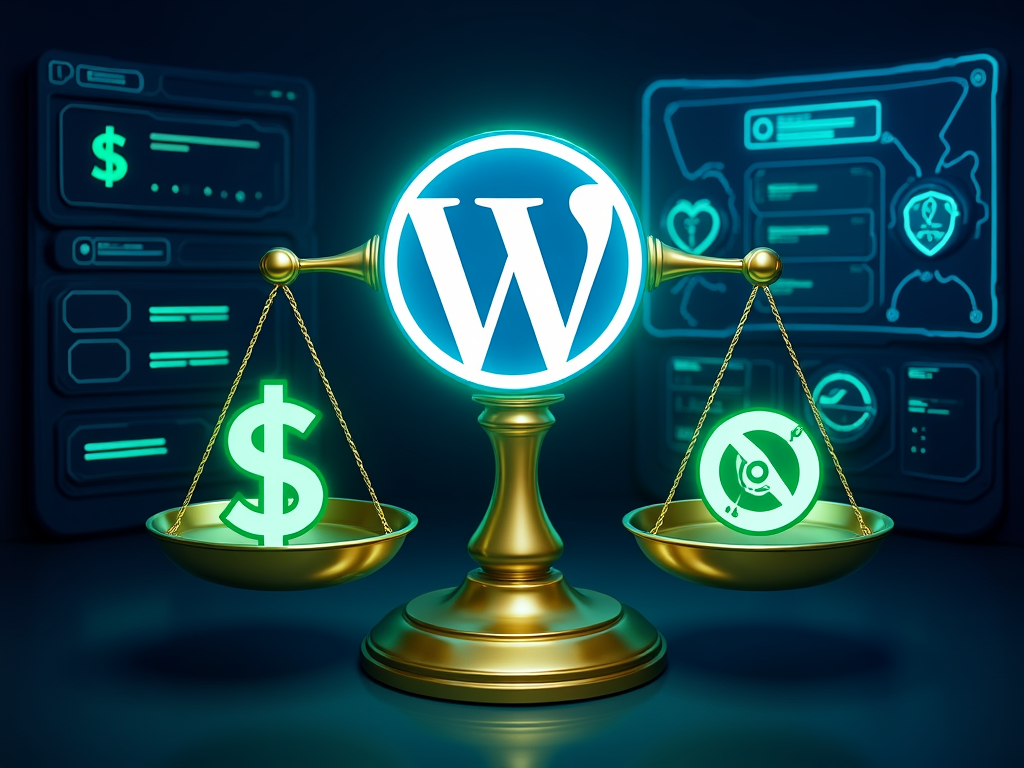<h1>WordPress for green hosting: eco-friendly</h1>
<b>Meta Description:</b>
Discover how WordPress and green hosting work together for eco-friendly websites. Learn about sustainable hosting providers, tips, and best practices for 2025.
---
<h2>Introduction</h2>
In today’s digital world, <b>WordPress</b> powers over 40% of all websites, making it a major player in the online ecosystem. As environmental concerns grow, <b>eco-friendly hosting</b> has become a crucial consideration for site owners. Choosing <b>green hosting for WordPress</b> not only reduces your website’s carbon footprint but also supports a more sustainable internet. This guide explores the best green hosting providers, practical tips for eco-friendly WordPress sites, and how you can make a real difference with your hosting choices.
---
<h2>Main Section</h2>
<h3>What makes WordPress hosting eco-friendly?</h3>
<b>Green hosting</b> refers to web hosting services that use renewable energy sources—such as wind, solar, or hydro—to power their data centers. For WordPress users, this means your site runs on servers that minimize environmental impact. The key factors that define eco-friendly WordPress hosting include:
<ul>
<li><b>Renewable energy usage:</b> Hosting providers powered by wind, solar, or hydroelectric energy.</li>
<li><b>Energy efficiency:</b> Use of modern, energy-efficient servers and cooling systems.</li>
<li><b>Carbon offsetting:</b> Providers that purchase carbon credits or invest in environmental projects.</li>
<li><b>Transparency:</b> Clear reporting on energy sources and sustainability efforts.</li>
</ul>
<b>Why it matters:</b>
The average website generates about <b>4.61 grams of CO₂ per page view</b>. Multiply that by thousands of visitors, and the impact becomes significant. By choosing green hosting, you help reduce this carbon footprint and support a cleaner digital future.
---
<h3>Top green hosting providers for WordPress</h3>
Here are some of the leading eco-friendly hosting providers for WordPress in 2025, each with unique sustainability credentials:
<table>
<tr>
<th>Provider</th>
<th>Renewable Energy Source</th>
<th>Key Features</th>
<th>Price Range (USD)</th>
<th>Best For</th>
</tr>
<tr>
<td>GreenGeeks</td>
<td>Wind, 300% offset</td>
<td>Managed WordPress, SSD, CDN</td>
<td>$2.95–$40</td>
<td>Small to medium sites</td>
</tr>
<tr>
<td>HostPapa</td>
<td>Wind, solar, certified</td>
<td>100% green energy, energy-efficient</td>
<td>$1.95–$13</td>
<td>Bloggers, small business</td>
</tr>
<tr>
<td>DreamHost</td>
<td>Wind, solar</td>
<td>Carbon neutral since 2007</td>
<td>$2.59–$15</td>
<td>Content creators</td>
</tr>
<tr>
<td>Kinsta</td>
<td>Google Cloud (100% renewable)</td>
<td>High performance, Cloudflare CDN</td>
<td>$30–$600</td>
<td>Large, high-traffic sites</td>
</tr>
<tr>
<td>Web Neutral Project</td>
<td>Solar-powered</td>
<td>100% on-site solar, carbon-neutral</td>
<td>$10–$25</td>
<td>Eco-conscious users</td>
</tr>
<tr>
<td>Eco Web Hosting</td>
<td>100% renewable</td>
<td>Trees planting, carbon-neutral</td>
<td>$4–$15</td>
<td>Instant eco impact</td>
</tr>
</table>
<b>GreenGeeks</b> stands out for its <b>300% renewable energy commitment</b>—they buy three times more green energy than they consume, making them one of the most sustainable options. <b>HostPapa</b> is a pioneer in green hosting, using 100% certified renewable energy and supporting global sustainability initiatives. <b>DreamHost</b> has been carbon neutral since 2007 and is transparent about its energy use.
---
<h3>How to make your WordPress site more eco-friendly</h3>
Beyond choosing a green host, there are several steps you can take to further reduce your site’s environmental impact:
<h4>1. Optimize Your Website</h4>
<ul>
<li><b>Use lightweight themes:</b> Choose themes that are designed for speed and efficiency.</li>
<li><b>Minimize plugins:</b> Each plugin adds to your site’s resource usage. Only use essential plugins.</li>
<li><b>Optimize images:</b> Compress images and use modern formats like WebP.</li>
<li><b>Enable caching:</b> Use caching plugins to reduce server load and improve performance.</li>
</ul>
<h4>2. Choose Eco-Friendly Plugins</h4>
<ul>
<li><b>LiteSpeed Cache:</b> Reduces server load and improves site speed.</li>
<li><b>WP Super Cache:</b> Another popular caching plugin.</li>
<li><b>Smush:</b> Optimizes images for faster loading.</li>
</ul>
<h4>3. Monitor Your Site’s Carbon Footprint</h4>
<ul>
<li>Use tools like <b>Website Carbon Calculator</b> or <b>Ecograder</b> to measure your site’s emissions.</li>
<li>Regularly audit your site for performance and sustainability.</li>
</ul>
<h4>4. Encourage Sustainable Practices</h4>
<ul>
<li><b>Educate your audience:</b> Share your commitment to sustainability on your site.</li>
<li><b>Support green initiatives:</b> Partner with eco-friendly organizations or donate a portion of your profits to environmental causes.</li>
</ul>
---
<h3>Practical Tips for Choosing Green Hosting</h3>
<ul>
<li><b>Check certifications:</b> Look for providers with Green-e® certification or partnerships with environmental organizations.</li>
<li><b>Ask about energy sources:</b> Ensure the provider uses renewable energy, not just carbon offsets.</li>
<li><b>Review transparency:</b> Choose hosts that openly share their sustainability reports and energy usage data.</li>
<li><b>Consider location:</b> Hosting providers with data centers in regions powered by renewable energy (like Scandinavia or California) are often more sustainable.</li>
</ul>
---
<h3>The Impact of Green Hosting</h3>
Switching to green hosting isn’t just good for the planet—it can also benefit your business:
<ul>
<li><b>Improved brand image:</b> Customers increasingly prefer companies that prioritize sustainability.</li>
<li><b>Cost savings:</b> Energy-efficient hosting can reduce operational costs.</li>
<li><b>Better performance:</b> Many green hosts use modern, high-performance infrastructure.</li>
</ul>
<b>Example:</b>
A small business with 10,000 monthly visitors can reduce its annual carbon emissions by <b>over 500 kg of CO₂</b> by switching to a green host. That’s equivalent to planting <b>25 trees</b> or taking a car off the road for a month.
---
BEST OFFERS:
Do you want to create your own company website or create your own online business on the Internet?
– WEB HOSTING
– DOMAIN REGISTRATION
– WEB DEVELOPMENT
– SITE BUILDER



“`html
Embracing the Future of Eco-Friendly Hosting
The role of technology in environmental sustainability cannot be ignored. As businesses and individuals continuously seek ways to enhance their online presence, the choice of hosting becomes paramount. Green hosting offers not just a lifeline to the planet but also an opportunity to align personal and brand values with eco-conscious choices.
According to recent studies, switching to a green host can lead to a significant drop in overall website emissions. Imagine, as you optimize your site’s speed and performance, you’re also reducing energy consumption and paving the way for a sustainable future. Each decision, from choosing a provider to selecting the right plugins, contributes to an overarching goal: a greener web.
Best Practices for Sustainable WordPress Development
To maximize the impact of your eco-friendly hosting, consider these best practices in WordPress development:
- Regularly update your site: Keeping WordPress and plugins updated not only enhances security but also helps your site run smoother, ultimately reducing energy consumption.
- Implement a Content Delivery Network (CDN): Distributing your content across a CDN can minimize latency and load times, thus saving energy as your site becomes more efficient.
- Use social media wisely: Rather than having your site do all the heavy lifting, integrate social media sharing to reduce server requests and bandwidth need.
- Limit multimedia: Heavy images and videos can slow down your site, leading to increased resource consumption. Opt for clean designs that prioritize text and lightweight graphics.
Evaluating Your Hosting Impact
Measuring the carbon footprint of your website is another crucial step. Use tools such as the Website Carbon Calculator and Ecograder to assess your emissions. These platforms not only provide you with hard data but also actionable insights on reducing your site’s environmental impact.
Remember: Transparency is key. Document your sustainability journey and share updates on your progress with your audience. Not only could this inspire others to follow your lead, but it also helps establish your brand as a leader in eco-conscious hosting.
The Community Aspect of Green Hosting
By choosing eco-friendly hosting solutions, you’re not acting alone. This movement is gaining momentum within the tech community. Many professionals and companies are advocating for greener practices, contributing to a larger narrative of sustainability. Reach out, connect, and explore collaborative projects or initiatives dedicated to environmental causes.
Engage with other eco-minded website owners in forums or social media groups. Collaboration can lead to innovative solutions and shared resources, creating an even bigger impact as you work together to promote sustainable web practices.
Inspiring Examples of Green Initiatives
Several organizations and individuals are setting precedents in green hosting and web development. Pages like Gatsby showcase eco-friendly practices by promoting PWA (Progressive Web Apps) that focus on minimal energy use. Similarly, companies such as Wikimedia and environmental nonprofits are committed to environmental responsibility, encouraging content creators to embed sustainability in every aspect of their online work.
Moreover, investigate local initiatives or tech meet-ups focused on sustainability. These can be platforms where you can learn from others, share your insights, and exchange best practices.
Final Thoughts on Eco-Friendly WordPress Hosting
The future of web hosting is undeniably green. By aligning your WordPress site with sustainable hosting providers, applying best practices, and spreading awareness about the importance of eco-friendliness in the digital realm, you become part of a vital movement towards a more sustainable future.
Your website, which can reach countless individuals around the globe, holds the power to inspire change. Remember, every small effort contributes to a far greater cause. The digital footprint you leave today can create ripples of positivity for generations to come.
The journey towards a greener internet is just beginning, and with each new eco-friendly choice, we can collectively write a new story—for our businesses, our communities, and our planet.
Relevant Videos:
BEST OFFERS:
Do you want to create your own company website or create your own online business on the Internet?
– WEB HOSTING
– DOMAIN REGISTRATION
– WEB DEVELOPMENT
– SITE BUILDER








